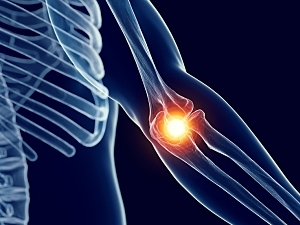For displaced coronal shear fractures of the capitellum, the favored treatment is open reduction and internal fixation (ORIF) because nonanatomic reduction can lead to obstruction of elbow motion and loose body formation. However, supporting evidence for ORIF is limited to small case series since these fractures are uncommon. None of those case series has reported data on preinjury work status, worker’s compensation status, or return to work after surgery.
In a retrospective study with very long-term follow-up, published in the Journal of Hand Surgery Global Online, researchers at Brigham and Women’s Hospital found a high rate of return to work after ORIF of displaced capitellar shear fractures.
D. Andrew Hulet, MD, and Jennifer L. D’Auria, MD, formerly fellows in the Hand and Upper Extremity Service of the Brigham Department of Orthopaedic Surgery, Philip E. Blazar, MD, section chief of the Service, Kyra Benavent, BS, project manager at the Brigham, Brandon E. Earp, MD, vice chair of Clinical Operations in the Brigham Department of Orthopedic Surgery, Dafang Zhang, MD, co-director of the Mass General Brigham Brachial Plexus & Nerve Disorders Program, also add to the evidence of good long-term patient-reported outcomes after ORIF of these fractures.
Methods
The study included all 18 patients who had an isolated coronal shear fracture of the capitellum, with or without trochlear extension, and underwent ORIF between November 2002 and August 2020 at Mass General Brigham. All patients participated in aggressive postoperative rehabilitation.
The average patient age was 48 (range, 22–78). Fractures were type 1A for 14 patients and type 1B for four (absence or presence of posterior column comminution, respectively).
Clinical and Radiographic Outcomes
At final follow-up of 6.4 years (range, 0.58–18.6 years), mean elbow motion was 4° to 137° of flexion, 83° of supination, and 83° of pronation.
The average radiographic follow-up was 443 days (range, 46 days to 7 years). Two cases of avascular necrosis were detected but no non-unions.
Two patients required reoperation. One had failure of fixation and underwent revision ORIF on postoperative day 16. The other had avascular necrosis requiring elbow arthroscopy, open capsular release, removal of hardware, and removal of loose bodies on day 265. Neither had additional complications.
Return to Work
Fourteen patients were working at the time of injury. Two of them were injured while working and had worker’s compensation insurance. The occupational class was manual for six patients, professional for six, and clerical for two.
At the time of the final clinical follow-up, 13 patients returned to work. The work status of the remaining patient was not documented.
Long-term Follow-up
Thirteen patients had a final telemedicine follow-up an average of 7.9 years after surgery. On a Likert pain scale of 0–10, their average score was 0.1 (range, 0–1). The average QuickDASH score was 6.8 (range, 0–25). No patient reported new complications or surgery.
This is the longest published follow-up period documenting a lack of late-developing symptoms of displaced capitellar shear fractures after ORIF.
